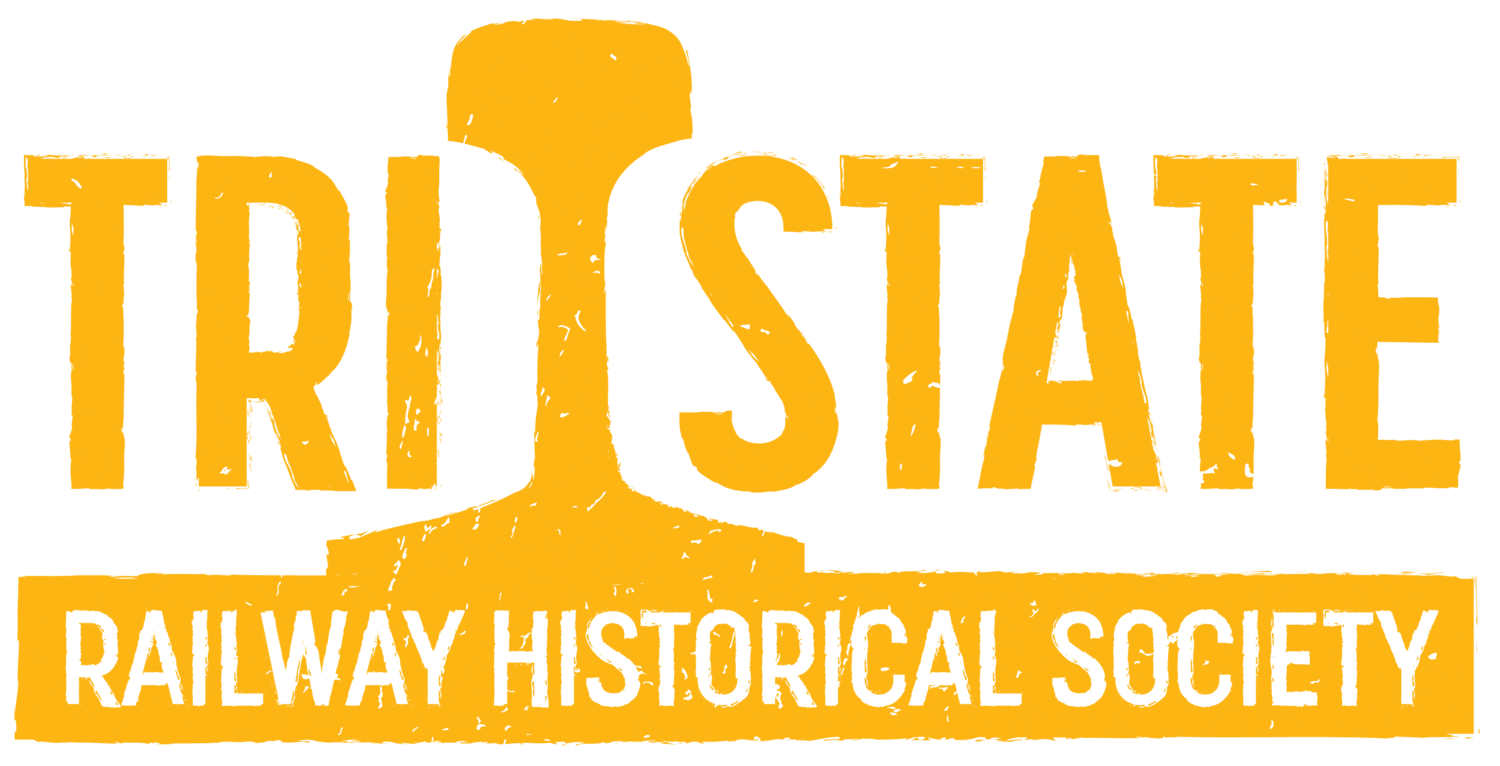BOONTON, NJ AND PORT JERVIS, NY – The Tri-State Railway Historical Society and Operation Toy Train of New York have partnered to acquire former Hoboken Manufacturers Railroad locomotive No. 700 and Middletown & New Jersey Railroad locomotive No. 2 for historic preservation. These locomotives are the last remaining examples of historic rail equipment from the heydays of their respective railroads.
M&NJ No. 2 switches Martin’s feed mill in Slate Hill, NY in April 1970. (Peter Brill collection)
Both are 44-ton diesel-electric locomotives constructed in 1947 by General Electric’s factory in Erie, Pennsylvania. Middletown & New Jersey No. 2 was originally built as American Cyanamid No. 5 in February of that year, and went to work at American Cyanamid’s Calco Chemical Division in Bridgewater, New Jersey. In 1963, the engine was acquired secondhand by the Middletown & New Jersey Railroad to supplement the railroad’s original 44-ton locomotive (No. 1). The new locomotive was renumbered as M&NJ No. 2 and operated along the entire 15-mile Middletown & New Jersey line, constructed in 1868 as an important bridge route between Middletown and the New Jersey state line in Unionville, New York.
When M&NJ No. 1 was taken out of service in 1981, the No. 2 became the M&NJ’s sole operating locomotive, remaining so for 36 years until additional locomotives were purchased in 2007. The railroad was acquired by holding company Regional Rail, LLC in 2009, and the No. 2 was sent to one of Regional Rail’s contract switching operations in Manheim, Pennsylvania. With the scrapping of M&NJ No. 1 in early 2021, the No. 2 became the sole surviving piece of equipment from the first 139 years of the M&NJ’s history.
Hoboken Manufacturers Railroad No. 700 is pictured shortly after its delivery to the railroad in late-1947, wearing its original red and grey Stevens Institute colors. (Railroad Museum of Pennsylvania collection)
Just eight months after M&NJ No. 2 rolled off the production line, Hoboken Manufacturers Railroad No. 700 rolled out of the General Electric plant in October of 1947. It went to work for its new owner, a line constructed in 1897 along the bustling waterfront of Hoboken, New Jersey with the backing of grandsons of John Stevens III, who had held the first charter for a railroad in the United States. The railroad was only a mile-and-a-half in length and featured tight curves and tracks that ran down the middle of several Hoboken streets. As delivered, HMRR No. 700 wore Stevens Institute of Technology colors - red and grey - to signify the railroad’s connection to Hoboken’s founding family.
The No. 700 was later repainted in a striking green and yellow scheme, operating for the Hoboken Manufacturers Railroad and its successor, the Hoboken Shore Railroad, until the latter railroad’s closure in 1976. It passed through a variety of owners until it was acquired by the Tyburn Railroad in Morrisville, Pennsylvania and became that railroad’s No. 400. The Tyburn Railroad was acquired by Regional Rail in 2011, placing both of these 44-ton locomotives under the same owner. The former HMRR No. 700 is the sole remaining piece of rail equipment from the Hoboken Manufacturers Railroad.
No. 700 is shown in this 1970s image wearing the green and yellow colors it wore for the majority of its Hoboken career. The railroad was renamed the Hoboken Shore Railroad in 1954. (Robert Eastwood photo, Railroad Museum of Pennsylvania collection)
Regional Rail, which is headquartered in Kennett Square, Pennsylvania, recognized the historic and regional significance of the No. 2 and No. 700 and reached out to Operation Toy Train of New York and the Tri-State Railway Historical Society to pass them both into preservation upon their retirement. The sale price for both locomotives, which graciously included a supply of spare parts, was not disclosed.
M&NJ No. 2 will join the display of Operation Toy Train of New York’s rail equipment at the new Port Jervis Transportation History Center in Port Jervis, New York, while the HMRR No. 700 will be added to the Tri-State Railway Historical Society’s railroad collection at the United Railroad Historical Society of New Jersey’s restoration and storage facility in Boonton, New Jersey. Both engines are slated for full mechanical and cosmetic restorations once they have been trucked to their respective new homes.
“The Middletown & New Jersey Railroad operated from Middletown, NY to the New Jersey state line, with the whole 15-mile line running less than 20 miles away from Port Jervis,” said Rudy Garbely, a director of Operation Toy Train. “When No. 2 became available, it made perfect sense to preserve it at the Port Jervis Transportation History Center as a prime example of equipment from a local railroad.”
No. 2 is at the Middletown, NY engine house on December 23, 1986. (Peter Brill collection)
“We are returning No. 700 home to New Jersey after an absence of forty-five years, said Richie King, treasurer of the Tri-State Railway Historical Society. “This locomotive is the last piece of equipment from a railroad with deep ties to Hoboken, the Stevens family, Stevens Institute, and New Jersey’s industrial heritage – it had to be saved, without question.” King will become Tri-State’s president on January 1st.
The two organizations have launched a joint campaign, called Operation 88, to fundraise $15,000 to complete the project. These funds will be used to cover the remaining transportation costs, mechanical upgrades, and repainting the locomotives into their historic liveries. Funding for the acquisition and initial transportation costs was secured from Liberty Historic Railway, Inc., a New Jersey-based non-profit that has funded numerous preservation efforts in years past, as well as contributions from private donors. To learn more about the project and to donate to the restorations of both locomotives, visit www.Operation88.org.






